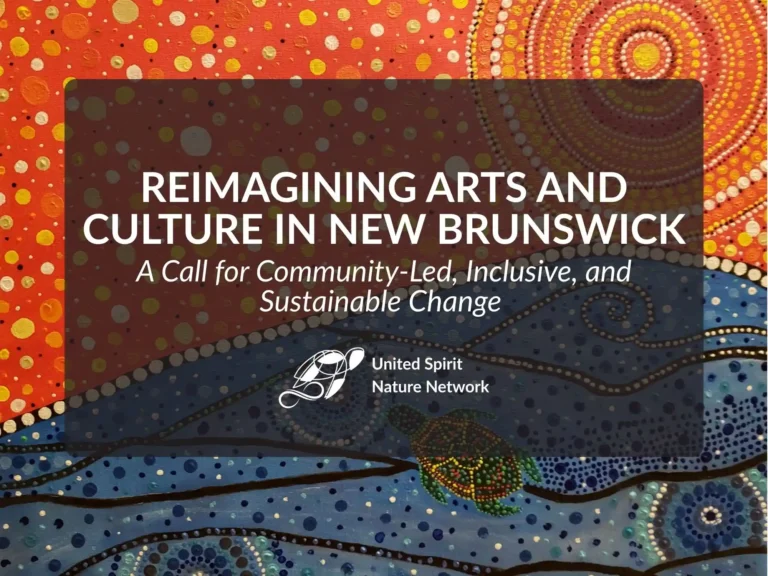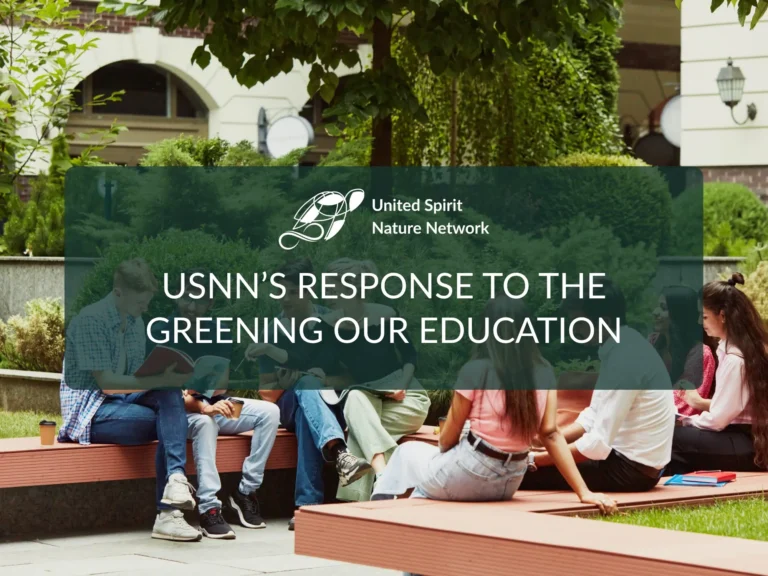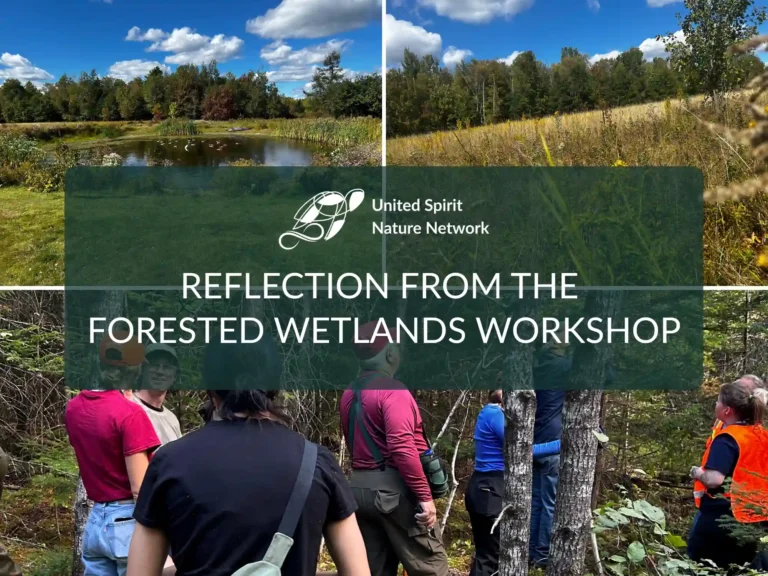On June 18, 2025, I had the privilege of attending the Environmental Trust Fund (ETF) Networking Event and Panel Discussion hosted at the Research & Productivity Council (RPC) in Fredericton, New Brunswick. The event brought together leading voices in the environmental protection and conservation sector, including fund recipients, researchers, and government representatives.
The theme of the day was collaboration, how we connect, share knowledge, and work collectively to address our province’s pressing environmental challenges. Moderated by Dr. Diane Botelho, CEO of RPC, the panel featured:
- Alex Berry, Director, Department of Environment and Local Government
- Dr. Joshua Kurek, Mount Allison University
- Dr. Claire Goodwin, Huntsman Marine
- Dr. Attiq Rehman, Director of Bioscience at RPC
The discussions were rich and multidimensional, tackling key questions around collaboration barriers, protection strategies, public engagement, and climate resilience.
Overcoming Barriers to Collaboration
Dr. Diane opened the discussion by recognizing the value of connection and experience-sharing in empowering action. Her first question to the panel “What are the biggest barriers to collaboration among organizations?” generated critical insights.
Dr. Joshua Kurek spoke about the difficulty of clearly defining roles in collaborative projects, which can result in confusion or ineffective outcomes. Dr. Claire Goodwin pointed out that lack of core operational support in some funding models limits the capacity for collaboration. Dr. Attiq Rehman raised an essential barrier—data sharing. Without standardized protocols for data ownership, quality control, and mutual access, partnerships often stall. Alex Berry added that unclear reporting structures and uncertainty around who benefits from collaboration can also hinder progress.
One of the key barriers USNN has identified in fostering collaboration among environmental organizations is geographic silos. Many grassroots and community-based organizations operate in rural or remote regions, where physical distance and limited transportation or communication infrastructure isolate them from broader networks. As a result, these groups often work in parallel rather than in partnership, missing out on opportunities to share knowledge, build collective capacity, or co-develop solutions. To address this, USNN is implementing a strategy that includes online knowledge exchanges and inter-regional forums. These virtual platforms are designed to break down geographic isolation by enabling regular dialogue, peer learning, and collaborative planning across New Brunswick and beyond.
Another significant challenge lies in varying levels of organizational maturity. Established organizations often have dedicated staff, structured governance, and streamlined administrative systems, while newer or grassroots groups may still be developing their internal capacity, often operating on volunteer effort with limited institutional knowledge. This disparity can make it difficult to align goals, timelines, and communication protocols, leading to misunderstandings or stalled collaborations. Recognizing this, USNN is initiating mentorship-style partnerships that intentionally connect experienced organizations with emerging ones. These partnerships are designed to foster mutual learning, share tools and resources, and support early-stage groups in strengthening their foundational systems and strategic clarity.
A third, and often more nuanced, barrier is the cultural disconnect that can emerge—particularly when collaborations involve Indigenous communities or organizations rooted in traditional knowledge systems. Different worldviews, decision-making protocols, and relationships with the land can lead to misalignment if not approached with care and respect. For example, Western scientific frameworks may prioritize data metrics and technical analysis, whereas Indigenous perspectives may emphasize lived experience, relational stewardship, and spiritual values. To bridge this gap, USNN embraces the Two-Eyed Seeing approach, which values both Indigenous and Western ways of knowing as complementary. By embedding this framework into our collaborative efforts, we aim to create a space where multiple knowledge systems can co-exist, inform one another, and enrich the work we do together.
Collective Environmental Protection
The second question asked: “How can we collaboratively protect the environment?”
Dr. Attiq used one of his current projects as an example, where he indicated that the use of microbial tracking and pathogen detection is an innovative way to involve communities in biodiversity protection. Dr. Claire highlighted her project’s collaborative model, which shares tools and findings between organizations. Dr. Joshua emphasized the role of traditional methods and community knowledge in understanding environmental change, urging investment in communication and data collection tools.
From my perspective, this part of the panel discussion raised a deeper and critical question—how much knowledge must an organization possess to effectively lead a protection-focused initiative? Environmental protection is a complex and evolving field that requires not only scientific understanding but also policy awareness, community engagement skills, and project management capacity. For newer or grassroots organizations, navigating this complexity without sufficient knowledge or experience can be overwhelming and, at times, discouraging. This raises the need for more structured support mechanisms that enable emerging groups to become part of the larger conservation mission in a meaningful and sustainable way.
Well-established organizations have an essential role to play in this process. They can help democratize access to knowledge by offering technical guidance, sharing best practices, co-developing projects, and creating platforms for mutual learning. When experienced organizations intentionally include and uplift newer ones—rather than unintentionally gatekeeping resources or information—it strengthens the entire sector’s capacity to deliver long-term environmental outcomes.
Ideally, this kind of support would be coordinated by a central, legislative body with a clear mandate to facilitate collaboration, provide capacity-building opportunities, and act as a neutral knowledge broker across organizational levels. While such a formal entity doesn’t yet exist, the New Brunswick Environmental Network (NBEN) has already emerged as a key platform for enabling this type of cross-sector engagement. It connects diverse environmental groups across the province, provides opportunities for collaboration, and supports skill-building among its members. By investing further in NBEN, whether through funding, partnerships, or strategic integration into provincial planning processes—we can amplify its role as a core capacity-building hub that nurtures both emerging and established organizations, ultimately fostering a more connected, informed, and empowered environmental community in New Brunswick.
Education and Awareness as Pillars of Protection
Dr. Diane then asked, “What role do education and awareness play in protecting the environment?”
Dr. Claire spoke about the role of technology in communicating problems and solutions to the public. Alex Berry emphasized the need for public acceptance and community-driven initiatives. Dr. Joshua reminded us that environmental issues are complex education must aim to demystify these “wicked problems” and confront common myths, such as
- Paper is always more environmentally friendly than plastic.
While paper is biodegradable and seen as “natural,” its production can require more energy and water than plastic, and it often results in higher carbon emissions during manufacturing. From a life-cycle perspective, reusable plastic (if reused many times) can have a lower environmental impact than single-use paper. The most sustainable choice often depends on how the material is used and disposed of, not just what it’s made from.
- Cutting down trees is always bad for the environment.
While deforestation is a major global concern, responsible forest management, such as selective logging or harvesting invasive species, can support ecosystem health. In some cases, removing non-native trees helps native biodiversity recover. Forest harvesting, when done sustainably, can also provide economic and ecological benefits, especially in community-led stewardship programs.
- All invasive species are harmful and must be eradicated.
Many invasive species do harm to native ecosystems—but not always. Some non-native species have become integrated into local ecosystems over time without disrupting the balance. In fact, in degraded environments, some invasive species can provide habitat, food, or erosion control. The ecological impact of an invasive species must be evaluated case by case, rather than assuming all of them are equally damaging.
- Renewable energy is 100% clean and has no environmental impact.
Renewable sources like solar, wind, and hydro are far cleaner than fossil fuels, but they are not impact-free. Solar panel manufacturing requires mining rare metals; wind farms can affect bird and bat populations; and large hydroelectric dams disrupt aquatic ecosystems and fish migration patterns. A just energy transition includes careful site selection and ongoing ecological monitoring.
- Climate change is only about warming temperatures.
While global warming is a core symptom, climate change also drives more extreme and unpredictable weather, including cold snaps, droughts, intense storms, and wildfires. These shifts affect water cycles, agriculture, and biodiversity, with widespread consequences for both natural systems and human communities.
- Recycling solves our waste problem.
Recycling helps, but it’s not a complete solution. A significant portion of what is collected for recycling ends up in landfills or incinerators due to contamination or lack of processing facilities. The more effective strategy follows the waste hierarchy: Reduce, Reuse, and then Recycle. Focusing only on recycling can obscure the need to consume less in the first place.
These misconceptions obscure the urgency and inclusivity of environmental stewardship. At USNN, we challenge these ideas by integrating nature-based learning into every community program. From a USNN standpoint, education must be a two-way street. We envision structured community consultations—meetings, open houses, and listening circles—where stakeholders co-create both the understanding and the action plan.
Climate Resilience and the Power of Shared Stories
The final major discussion centered on climate resilience. Dr. Diane asked: “How are local organizations building climate resilience collaboratively?”
Alex Berry underlined the importance of clear and active climate action plans—both short- and long-term—with proven implementation. Dr. Joshua added that sharing success stories increases public understanding and momentum. Alex insightfully noted that sharing challenges and failures is equally powerful, as it builds resilience through learning. Dr. Claire emphasized the critical need for multi-year, consistent funding to ensure continuity and success.
At USNN, our approach to climate resilience involves weaving multi-stakeholder needs into our program design. As we grow, we aspire to create a collaborative educational model where programs double as learning tools for both participants and community observers. Transparent sharing of what works and what doesn’t will be a hallmark of this model.
A Call for Unified Effort
To close the session, Dr. Diane offered a hopeful vision: that one day, New Brunswick’s environmental organizations will unite under a shared project that benefits all communities and ecosystems. From USNN’s point of view, this prompts a vital question: How do we find our place in such a unified project? Our answer: by sharing expertise, supporting one another, and committing to real collaboration—not in name alone, but in structure, spirit, and sustained effort.
Best Practices for Community Engagement
During the open-floor Q&A, one attendee asked: “What are the best practices for engaging and empowering communities through environmental projects?”
From the USNN experience, some key strategies include:
- Inclusion from Day One: Invite community voices during the design phase, not just implementation.
- Capacity Building: Provide tools and training that allow communities to lead protection efforts long after a project ends.
- Cultural Relevance: Tailor approaches to reflect local traditions, values, and knowledge systems.
- Feedback Loops: Establish regular check-ins and adjust programs based on lived experiences.
We invite our peers and partners to reflect on this question, share their strategies, and continue this essential dialogue. The future of our environment depends not just on the actions we take—but on how we take them, together.








